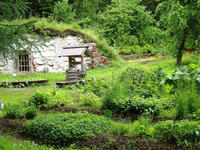You are in: Europe -> Russia -> Cultural and Histori... , and traditional search or Image Gallery will yield results of this site only
Cultural and Historic Ensemble of the Solovetsky Islands
| Site number: | 632 |
|
| Type of site: | Cultural | |
| Date: | 5th century BC | |
| Date of Inscription: | 1992 | |
| Location: | Eurasia, Russian Federation, Arkhangelsky region, Solovetsky district | |
Up to 75 images are shown here. Click on each for more details or on Image Gallery for more images.
Six official UN languages:
Arabic,
Chinese,
English,
French,
Russian,
Spanish
Other languages: Czech, Esperanto, Estonian, Finnish, German, Hungarian, Italian, Japanese, Lithuanian, Norwegian-bokmål, Polish, Slovak, Ukrainian
Other languages: Czech, Esperanto, Estonian, Finnish, German, Hungarian, Italian, Japanese, Lithuanian, Norwegian-bokmål, Polish, Slovak, Ukrainian
| Description: | In the western part of the White Sea six islands covering 300 sq. km compile the Solovetsky archipelago. Consecutively inhabited since the 5th century B.C., they hold vital traces of a human presence from as far back as the 5th millennium B.C. Avid monastic activity has been present at the archipelago since the 15th century; the site also holds several churches from the 16th-19th century. --WHMNet paraphrase from the description at WHC Site, where additional information is available. | |
| The Solovki is a shortened name for the Solovetsky Islands, White Sea, Russia, used primarily in reference to a prison camp in the Soviet Gulag. Historically it has been the location of the famous Russian Orthodox Solovetsky Monastery complex, which repelled foreign attacks during the Time of Troubles, the Crimean War, and the Russian Civil War. By Lenin's decree, the monastery buildings were turned into Solovetsky Lager' Osobogo Naznachenia (SLON), that is, the "Solovki Special Purpose Camp". The acronym of the camp name is a sullen word play for those who speak Russian: slon means "elephant". It was one of the first "corrective labor camps", a prototype of the Gulag system. In 1926 the Solovki camp was turned into a prison, partly because of the conditions which made escape near impossible and partly because the monastery had been used as a political prison by the Russian imperial administration. The treatment of the prisoners attracted much criticism in Western Europe and the USA. After a thorough cleanup, the Soviet government sent the proletarian writer Maksim Gorky to the camp in an attempt to counter this criticism. Indeed, Gorky wrote a very favourable essay, which praised the beautiful nature of the islands. How much Gorky knew about the real conditions, remains a mystery. The prison was closed in 1939 because the Second World War was imminent, while the camp was situated close to the border with Finland. The buildings were then transformed into a naval base. The Orthodox Church reestablished the monastery in 1992, the year when the ensemble was included into UNESCO's World Heritage List. --Wikipedia. Text is available under the Creative Commons Attribution-ShareAlike License. | ||
| Source: | http://whc.unesco.org/en/list/632 | |
| Reference: | 1. UNESCO World Heritage Center, Site Page. | |







